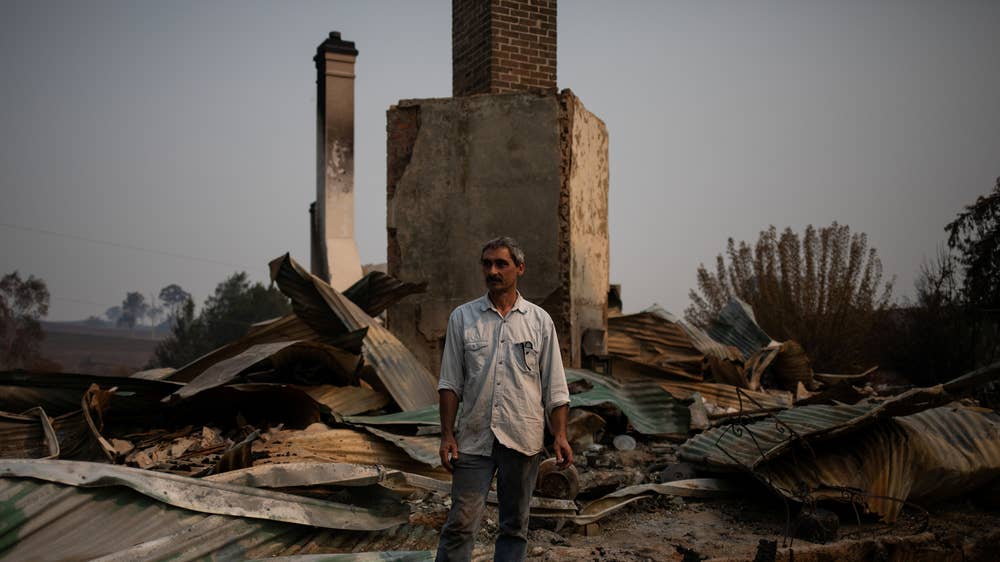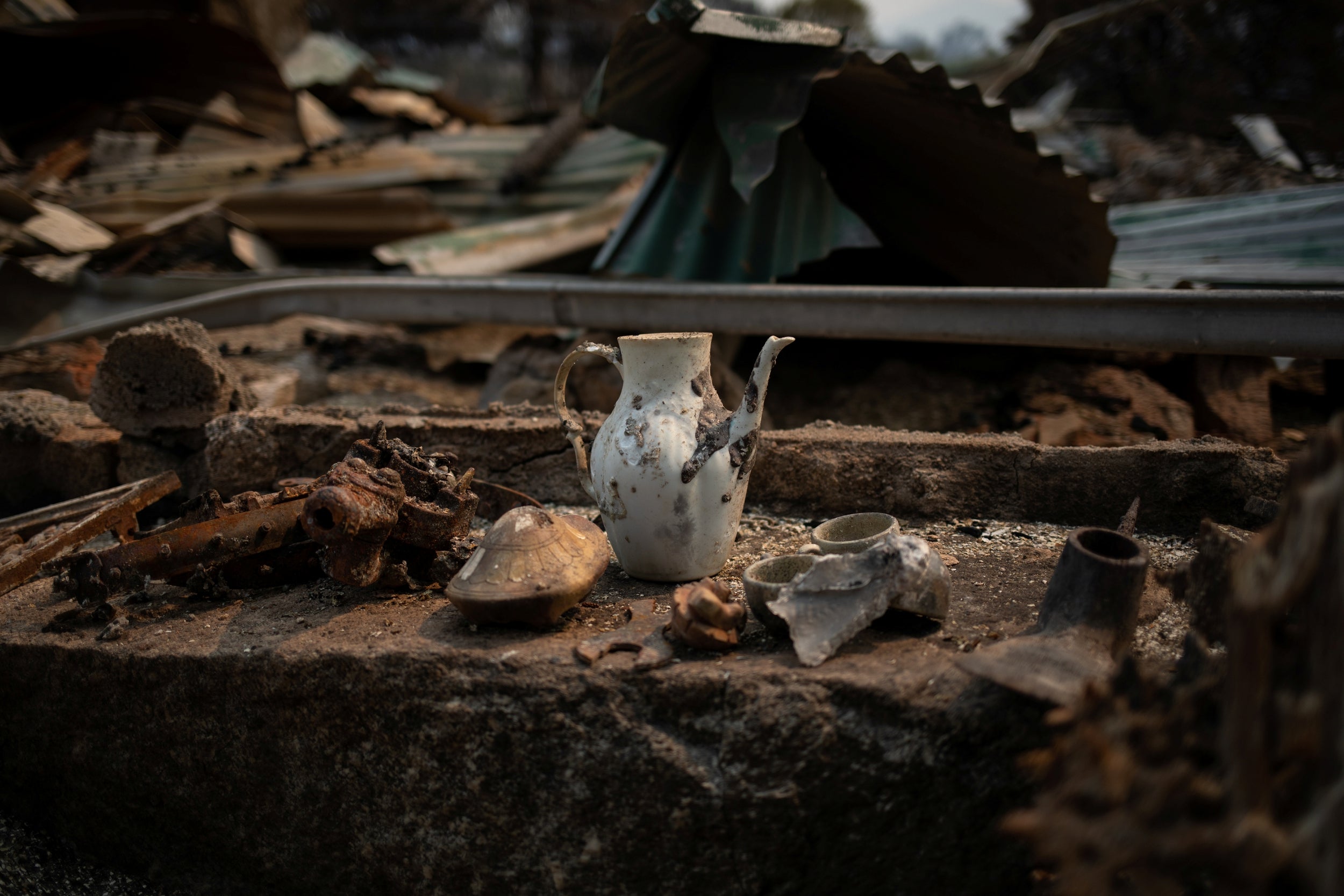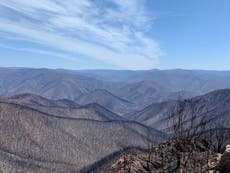Within minutes of the announcement, many in Baghdad’s main protest camp of Tahrir Square began chanting “Allawi is rejected, Allawi is rejected!” Demonstrators hit the streets in the holy city of Najaf, pledging to escalate their movement further as Allawi was not the independent they had long demanded.
01/02/2020

Newly named Iraqi Prime Minister Mohammad Allawi.
© Reuters, Stringer Text by:NEWS WIRES
Iraq’s president named former communications minister Mohammad Allawi as the country’s new prime minister on Saturday after an 11th-hour consensus among political blocs, but the streets seemed divided on his nomination.
Baghdad and the mainly Shiite south have been gripped by four months of anti-government rallies demanding snap elections, a politically independent prime minister and accountability for corruption and protest-related violence.
Faced with pressure from the street and the Shiite religious leadership, Prime Minister Adel Abdel Mahdi resigned in December and political life came to a standstill.
In a bid to end the paralysis, President Barham Saleh gave political blocs until Saturday to name a replacement to Abdel Mahdi or else he would appoint his own candidate.
On Saturday evening, Allawi posted a video to Twitter saying Saleh had nominated him as the new premier.
“After the president appointed me to form a new government a short while ago, I wanted to talk to you first,” he said, addressing the camera in colloquial Iraqi dialect.
“I will ask you to keep up the protests, because if you are not with me, I won’t be able to do anything,” Allawi said.
Breaking: Iraqi President Barham Salih appoints Muhammad Tawfiq Allawi to form new #Iraqi govt, Allawi announces his appoints in this video.
He was Minister of Communications in the former govt led by Nuri al-Maliki pic.twitter.com/59VcWjRNJj— Mustafa Habib (@Mustafa_Habib33) February 1, 2020
There was no announcement from Saleh but Abdel Mahdi congratulated his successor and powerful cleric Moqtada Sadr swiftly endorsed Allawi.
“This is a good step,” tweeted Sadr, who controls the largest bloc in parliament and key ministerial posts.
“I hope the president’s appointment of Mohammad Allawi is acceptable to the people and that they have patience,” he wrote.
Protesters split
But many protesters across Iraq were unconvinced.
Within minutes of the announcement, many in Baghdad’s main protest camp of Tahrir Square began chanting “Allawi is rejected, Allawi is rejected!”
Demonstrators hit the streets in the holy city of Najaf, pledging to escalate their movement further as Allawi was not the independent they had long demanded.
“Mohammad Allawi’s nomination came with the approval of the same corrupt political blocs we’ve been protesting against for over four months,” said lawyer Hassan Mayahi, marching in the southern hotspot of Diwaniyah.
Meanwhile, the United States issued a carefully worded statement, saying it hoped Allawi’s nomination would lead to “an independent and honest government committed to addressing the needs of the Iraqi people.”
Despite the prime minister-designate’s call for them to keep rallying, protesters were skeptical he would be able to implement their demands.
According to the constitution, he now has one month to form a cabinet which would need a vote of confidence from parliament.
In Iraq, the cabinet is typically formed by consensus among political rivals after intense horsetrading over influential posts.
“If the (political) blocs try to impose their candidates on me, I’ll come out and talk to you and leave this nomination,” Allawi said.
Sadrists in the streets
Allawi, a Shiite Muslim, was a member of the secular Sunni-backed Iraqiya bloc which was headed by his cousin and former prime minister Iyad Allawi.
He served as communications minister twice under former PM Nuri al-Maliki but resigned both times, alleging corruption and interference in personnel appointments.
Maliki, who still holds sway in Iraq’s parliament, is said to have rejected Allawi’s candidacy but other political blocs came to a consensus amid pressure by the president.
Sadr, too, had renewed his push for an end to the political crisis after suspending his support for the rallies for one week.
He endorsed the protests in October then appeared to change his mind last month, saying he would no longer “interfere” in the movement.
His hard-core backers—the most well-organised of the demonstrators—promptly dismantled their tents in protest camps across the country.
But on Friday he seemed to flip again, calling for his supporters “to renew the peaceful, reformist revolution.”
They flooded in the streets on Saturday afternoon, setting up tents in Tahrir with portraits of Sadr and blaring music praising him just hours before Allawi’s nomination.
The move came after both the United Nations and Iraq’s top Shiite religious authority both called for an end to the political paralysis gripping Iraq.
The UN’s top official in Iraq Jeanine Hennis-Plasschaert had tweeted Friday that solutions were “urgently needed” to “break the political deadlock”.
And the country’s top Shiite cleric Grand Ayatollah Ali Sistani urged Iraq’s political parties to “accelerate the formation of a new government”.
“It is imperative to speed up holding early elections so that the people will have their say,” he said in his sermon, which also demanded an end to bloodshed.
More than 480 people have died in protest-related violence since October, the great majority of them demonstrators killed by live rounds or military-grade tear gas canisters.
(AFP)
Iraq’s president named former communications minister Mohammad Allawi as the country’s new prime minister on Saturday after an 11th-hour consensus among political blocs, but the streets seemed divided on his nomination.
Baghdad and the mainly Shiite south have been gripped by four months of anti-government rallies demanding snap elections, a politically independent prime minister and accountability for corruption and protest-related violence.
Faced with pressure from the street and the Shiite religious leadership, Prime Minister Adel Abdel Mahdi resigned in December and political life came to a standstill.
In a bid to end the paralysis, President Barham Saleh gave political blocs until Saturday to name a replacement to Abdel Mahdi or else he would appoint his own candidate.
On Saturday evening, Allawi posted a video to Twitter saying Saleh had nominated him as the new premier.
“After the president appointed me to form a new government a short while ago, I wanted to talk to you first,” he said, addressing the camera in colloquial Iraqi dialect.
“I will ask you to keep up the protests, because if you are not with me, I won’t be able to do anything,” Allawi said.
Breaking: Iraqi President Barham Salih appoints Muhammad Tawfiq Allawi to form new #Iraqi govt, Allawi announces his appoints in this video.
He was Minister of Communications in the former govt led by Nuri al-Maliki pic.twitter.com/59VcWjRNJj— Mustafa Habib (@Mustafa_Habib33) February 1, 2020
There was no announcement from Saleh but Abdel Mahdi congratulated his successor and powerful cleric Moqtada Sadr swiftly endorsed Allawi.
“This is a good step,” tweeted Sadr, who controls the largest bloc in parliament and key ministerial posts.
“I hope the president’s appointment of Mohammad Allawi is acceptable to the people and that they have patience,” he wrote.
Protesters split
But many protesters across Iraq were unconvinced.
Within minutes of the announcement, many in Baghdad’s main protest camp of Tahrir Square began chanting “Allawi is rejected, Allawi is rejected!”
Demonstrators hit the streets in the holy city of Najaf, pledging to escalate their movement further as Allawi was not the independent they had long demanded.
“Mohammad Allawi’s nomination came with the approval of the same corrupt political blocs we’ve been protesting against for over four months,” said lawyer Hassan Mayahi, marching in the southern hotspot of Diwaniyah.
Meanwhile, the United States issued a carefully worded statement, saying it hoped Allawi’s nomination would lead to “an independent and honest government committed to addressing the needs of the Iraqi people.”
Despite the prime minister-designate’s call for them to keep rallying, protesters were skeptical he would be able to implement their demands.
According to the constitution, he now has one month to form a cabinet which would need a vote of confidence from parliament.
In Iraq, the cabinet is typically formed by consensus among political rivals after intense horsetrading over influential posts.
“If the (political) blocs try to impose their candidates on me, I’ll come out and talk to you and leave this nomination,” Allawi said.
Sadrists in the streets
Allawi, a Shiite Muslim, was a member of the secular Sunni-backed Iraqiya bloc which was headed by his cousin and former prime minister Iyad Allawi.
He served as communications minister twice under former PM Nuri al-Maliki but resigned both times, alleging corruption and interference in personnel appointments.
Maliki, who still holds sway in Iraq’s parliament, is said to have rejected Allawi’s candidacy but other political blocs came to a consensus amid pressure by the president.
Sadr, too, had renewed his push for an end to the political crisis after suspending his support for the rallies for one week.
He endorsed the protests in October then appeared to change his mind last month, saying he would no longer “interfere” in the movement.
His hard-core backers—the most well-organised of the demonstrators—promptly dismantled their tents in protest camps across the country.
But on Friday he seemed to flip again, calling for his supporters “to renew the peaceful, reformist revolution.”
They flooded in the streets on Saturday afternoon, setting up tents in Tahrir with portraits of Sadr and blaring music praising him just hours before Allawi’s nomination.
The move came after both the United Nations and Iraq’s top Shiite religious authority both called for an end to the political paralysis gripping Iraq.
The UN’s top official in Iraq Jeanine Hennis-Plasschaert had tweeted Friday that solutions were “urgently needed” to “break the political deadlock”.
And the country’s top Shiite cleric Grand Ayatollah Ali Sistani urged Iraq’s political parties to “accelerate the formation of a new government”.
“It is imperative to speed up holding early elections so that the people will have their say,” he said in his sermon, which also demanded an end to bloodshed.
More than 480 people have died in protest-related violence since October, the great majority of them demonstrators killed by live rounds or military-grade tear gas canisters.
(AFP)








































